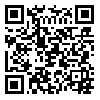Volume 78, Issue 6 (September 2020)
Tehran Univ Med J 2020, 78(6): 379-387 |
Back to browse issues page
Download citation:
BibTeX | RIS | EndNote | Medlars | ProCite | Reference Manager | RefWorks
Send citation to:



BibTeX | RIS | EndNote | Medlars | ProCite | Reference Manager | RefWorks
Send citation to:
Jafari S, Shalbaf A, Sleigh J. Depth of anesthesia estimation based on EEG signal using brain effective connectivity between frontal and temporal regions. Tehran Univ Med J 2020; 78 (6) :379-387
URL: http://tumj.tums.ac.ir/article-1-10655-en.html
URL: http://tumj.tums.ac.ir/article-1-10655-en.html
1- Department of Biomedical Engineering, Faculty of Engineering, Central Tehran Branch, Islamic Azad University, Tehran, Iran.
2- Biomedical Engineering and Medical Physics, School of Medicine, Shahid Beheshti University of Medical Sciences, Tehran, Iran.
3- Department of Anesthesia, Waikato Hospital, Hamilton, New Zealand.
2- Biomedical Engineering and Medical Physics, School of Medicine, Shahid Beheshti University of Medical Sciences, Tehran, Iran.
3- Department of Anesthesia, Waikato Hospital, Hamilton, New Zealand.
Abstract: (1717 Views)
Background: Ensuring adequate depth of anesthesia during surgery is essential for anesthesiologists to prevent the occurrence of unwanted alertness during surgery or failure to return to consciousness. Since the purpose of using anesthetics is to affect the central nervous system, brain signal processing such as electroencephalography (EEG) can be used to predict different levels of anesthesia. Anesthesia disrupts the interaction between different regions of the brain, so brain connectivity between different areas can be a key factor in the anesthesia process. This study aims to determine the depth of anesthesia based on the EEG signal using the effective brain connectivity between frontal and temporal regions.
Methods: This study, which is done from April to December 2018 in Tehran, used EEG signals recorded from eight patients undergoing Propofol anesthesia at Waikato Hospital of New Zealand. In this study, effective brain connectivity in the frontal and temporal regions have been extracted by using various Granger causality methods, including directional transfer function, normalized directional transfer function, partial coherence, partial oriented coherence, and imaginary coherence. The extraction of effective connectivity indices in three modes (awake, anesthesia and recovery) was calculated using MATLAB software. The perceptron neural network is then used to automatically classify the anesthetic phases (Awake, Anesthesia, and recovery).
Methods: This study, which is done from April to December 2018 in Tehran, used EEG signals recorded from eight patients undergoing Propofol anesthesia at Waikato Hospital of New Zealand. In this study, effective brain connectivity in the frontal and temporal regions have been extracted by using various Granger causality methods, including directional transfer function, normalized directional transfer function, partial coherence, partial oriented coherence, and imaginary coherence. The extraction of effective connectivity indices in three modes (awake, anesthesia and recovery) was calculated using MATLAB software. The perceptron neural network is then used to automatically classify the anesthetic phases (Awake, Anesthesia, and recovery).
|
Results: The results show that the directional transfer function method has a high correlation coefficient with BIS in all cases. Also, the directional transfer function index due to faster response on the drug, low variability, and better ability to track the effect of Propofol works better than the BIS index as a commercial anesthetic depth monitor in clinical application. Also, when using an artificial neural network, our index has a better ability to automatically detect three anesthesia than the BIS index.
Conclusion: The directional transfer function between the pair of EEG signals in the frontal and temporal regions can effectively track the effect of Propofol and estimate the patient's anesthesia well compared to other effective connectivity indexes. It also works better than the BIS index in clinical centers. |
Type of Study: Original Article |
| Rights and permissions | |
 |
This work is licensed under a Creative Commons Attribution-NonCommercial 4.0 International License. |





